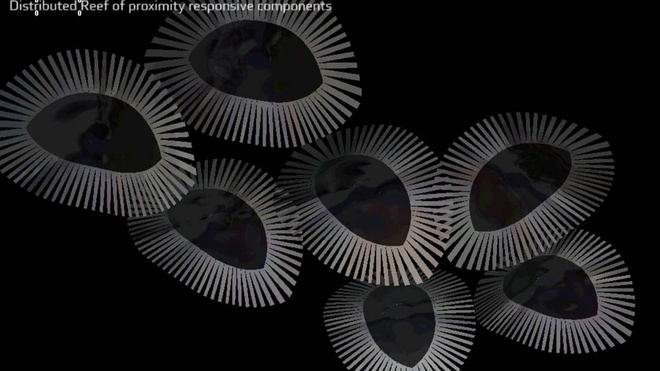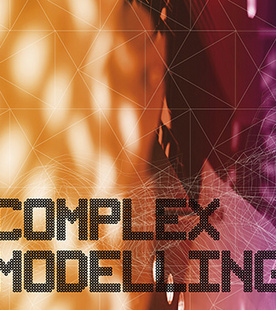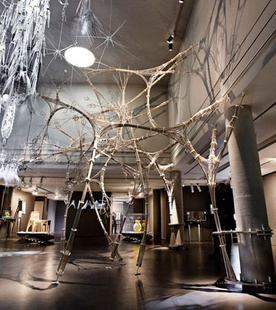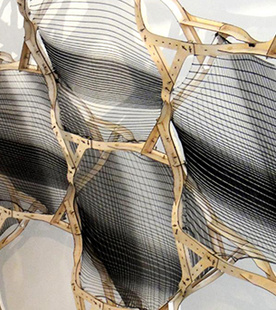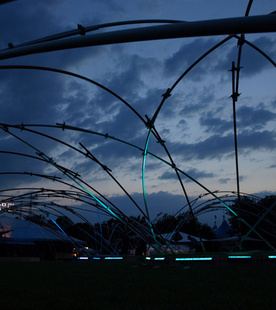Reef.2
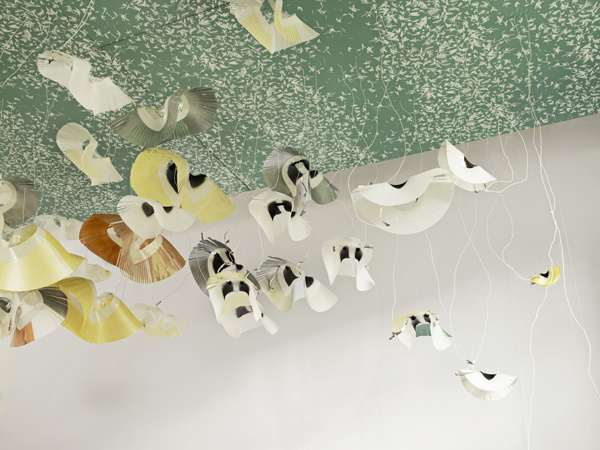
A research project and interactive installation by CITA in collaboration with CIID and Potsdam University , September 2011.
Reef is a material tale, an embodied narrative, exploring through the design of a self-actuated ceiling, the potential of electro-active polymers to contribute to the conceptualization and materialization of a dynamic interior.
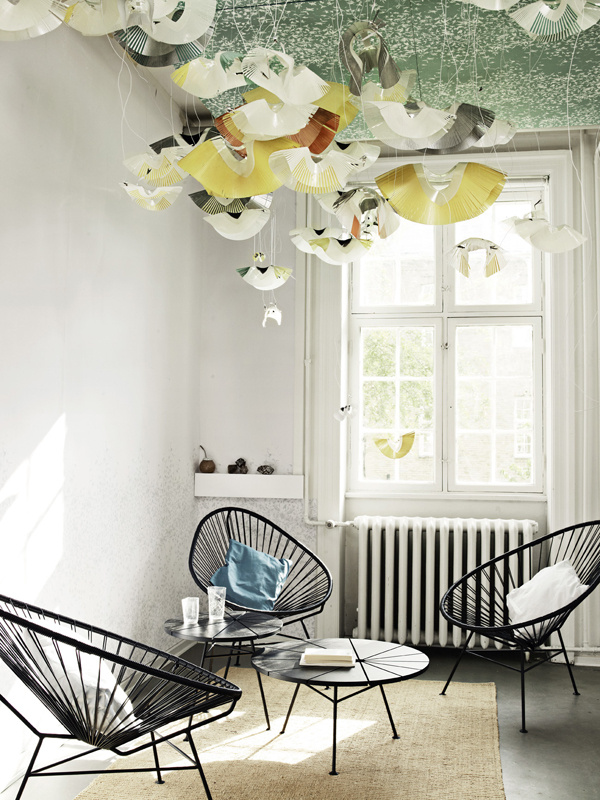
Reef emerges from the ceiling as a an archipelago of minimum energy structures breathing at the pace of its surrouding environment. This archipelago is composed of both active and passive structures. While passive structures quiver in response to indoor airflow, active structures - connected to a wind sensor -, open and close following the pulse of the wind.
These structures relies on dielectric elastomers, a specific family of plastics expanding and contracting with electricity. Shaped according to principles of self-organization and energy minimization, they give rise to complex 3D structures with adaptive properties as a voltage is applied on their surface.
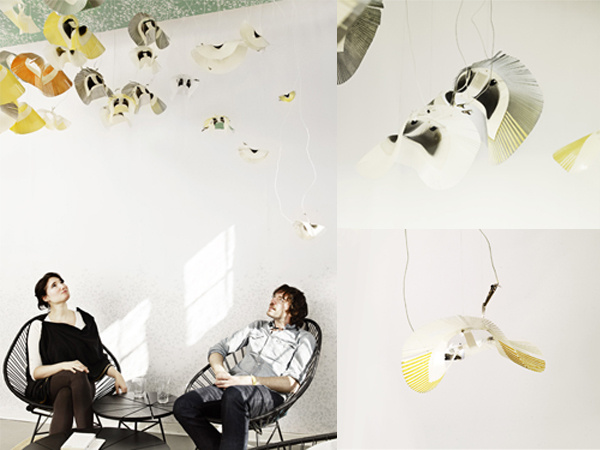
Even though its organization may recall the shoals of corals, Reef keeps its name from the world of sailing, equally evoking this part of a sail that can be tied or rolled up to make it smaller in a strong wind. Like the sail, Reef’s components folds and unfolds as they sense wind. Both are subjects to the unpredictability of its variations. Both work as metaphor of control and actuation. However, while the sail satisfies a specific need: controlling the stability of the ship, Reef stands outside of the primacy of the user.
By imagining the outlines of a home that feel, breathe and quiver at the pace of the exterior, Reef engages a reflexion on how smart technologies can be appropriated to encourage a relationship of interconnectivity between nature, the home and its inhabitants.
Reef, rather than seeking control over the environment to fulfil specific needs, aims at developing the inhabitant awareness for the exterior environment. By materializing the presence of wind within the interior, Reef operates a transfer in which the inhabitant is not in control of but exposed and subject to the rhythmicities of nature. This shift expresses the need for technology to synchronize with the time of nature as a mean to reintroduce a culture in which technology is less human-centred than earth-life interconnected.
Here, technology become the medium through which the natural world can make its voice heard, affirming its presence in an environment from which it has for long been secluded.
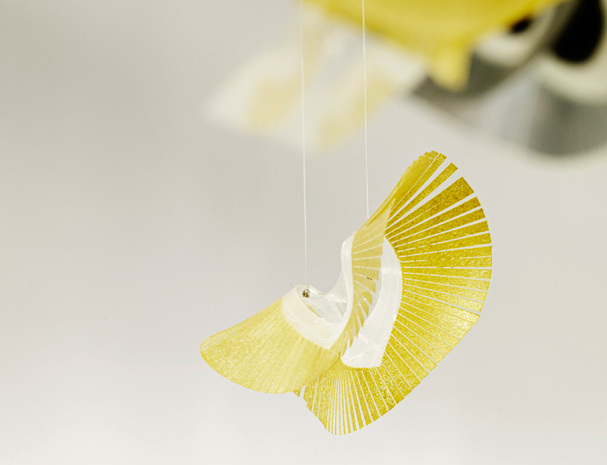
Design
Aurélie Mossé
Fabrication
Frederikke Gregersen, Svenja Keune, Aurélie Mossé.
Photography
Anders Ingvartsen
Support
CITA & the Royal Danish Academy of Fine Arts, School of Architecture, Copenhagen
MetOne (wind sensor)
Ok Design (furniture)
... and the precious help of Henrik Villumsen and Bitten Hegelund.
Publications
Mossé, A., Gauthier, D., Kofod, G.,
“Towards Interconnectivity: Appropriation of Minimum Energy Structures in An Architectural Context”
In: Studies in Material Thinking , Vol 7, February 2012
Mossé, A., Gauthier, D., Kofod, G.,
“Towards Interconnectivity: Appropriation of Minimum Energy Structures in An Architectural Context”
In: Conference Proceedings Ambience 2011, Borås


